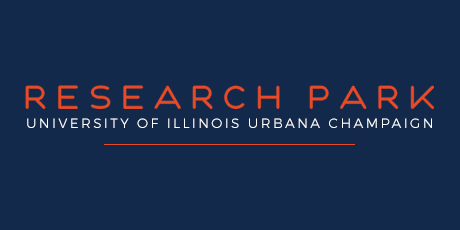URBANA It’s not every day you get a call offering you $100,000 much less a commitment for $9.1 million but Munir Nayfeh got such a call in August.
The University of Illinois physics professor had just published a paper in the journal Applied Physics Letters. The paper explained how an ultrathin layer of nanomaterials could improve the efficiency of solar cells.
It just so happened that a UI news release about the finding caught the eye of California investor David Gelbaum who quickly placed a call to Nayfeh.
The professor remembers the call well.
“I’m sitting like this in my office, and a guy came on the phone, flashed his name, said he’d read about the solar energy results and would like to invest in this project,” Nayfeh said. “He said he’d like to give me an advance, a $100,000 check for the right of first refusal, and I said, ‘Sure.'”
“He said, ‘I’ll send it, and you’ll get it tomorrow,'” Nayfeh said. “I thought it was a joke. Sure enough, I came in the next day, and there was a check.”
But that’s not all.
Nayfeh and Gelbaum talked frequently in succeeding weeks. At one point, Gelbaum offered $4 million for 33 percent of Nayfeh’s start-up company. When Nayfeh asked for $5 million, Gelbaum said fine.
Later, Gelbaum revised his offer: $8 million for 49 percent of the company.
And Nayfeh took him up on it.
This week, Gelbaum came to Champaign-Urbana to meet with Nayfeh, see the community and university and help plot the next moves for the new company, Nano Si Solar.
The Newport Beach, Calif., investor flew into Willard Airport on Tuesday and got a demonstration Wednesday of how silicon nanoparticles are made in the lab.
Gelbaum, who has a reputation for investing in “green” technologies, met key UI administrators and is scheduled to meet Chancellor Richard Herman for the basketball game against Purdue this afternoon.
During an interview Thursday, Gelbaum, 58, said he was impressed when he read about Nayfeh’s work and the efficiencies that could be gained applying a thin film of silicon nanoparticles to solar cells.
“I look forward to working with Dr. Nayfeh because he has tremendous energy and creativity,” Gelbaum said. “He wants to do something good for the world, and he cares about people, young people in particular.”
Gelbaum, whose father was a mathematics professor and who has a bachelor’s degree in math himself, made his fortune in statistical arbitrage which involved trading a large number of stocks for short-term returns.
The work was based largely on price movements, and not on the knowledge of a company’s products, he said.
Gelbaum was in that business 30 years, the last 13 of which he was a partner in TGM Management. He retired from the business in 2002 and began investing in alternative energy about 16 months ago, he said.
“I hadn’t been investing full-time for about four years, then I decided I wanted to do it again,” he said. “Alternative energy made sense.”
Since then, he’s invested mostly in publicly traded companies, among them WorldWater & Solar Technologies Corp., Ascent Solar, DayStar Technologies, Beacon Power, EMCORE Corp. and Spire Corp.
He’s also invested in other companies, such as LiveFuels, which is working to convert algae into biocrude; Nanoptek, which is working to produce hydrogen from sunlight and water; and Magenn Power, a Canadian company working with floating wind turbines.
Some of his bigger investments have been publicly disclosed. He said they include $35 million in EMCORE and $20 million in WorldWater & Solar. But perhaps his most notable use of money was a $100 million commitment to the Sierra Club in 2001.
Today, Gelbaum serves on the board of the Wildlands Conservancy, which manages preserves and provides outdoor education. But he said most of his time away from family is spent on business, not spending time outdoors.
Gelbaum said it probably will take a year or two to bring Nano Si Solar’s technology to commercialization.
“We have to hire a team and see if it works at scale,” he said. “Many things are doable at the desktop level, but not at the mass production level.
“We have to be able to demonstrate this works on many kinds of solar cells,” he added. “It would be nice to demonstrate that we can manufacture silicon nanoparticles in bulk.”
Nayfeh said rays in the blue-ultraviolet region of the spectrum can be harmful to solar cells and ruin them. But the thin layer of nanoparticles will both protect the solar cell and make it more efficient, he said.
Gelbaum said he arranged for an associate, David Anthony, to help recruit a team for Nano Si Solar.
“He’s collected 60 resumes for COO (chief operating officer) and is looking for candidates for other positions,” Gelbaum said.
Gelbaum said he’s made day trips to see some of his other investments, but has never spent five days as he did in Champaign-Urbana’s case.
“I want him to like the place, to feel a sense of this place,” Nayfeh said. “I don’t want the company to relocate.”
Gelbaum said he thinks Champaign-Urbana is the right location for Nano Si Solar. “I think it’s a good location next to the university,” he said. “Dr. Nayfeh is here. This is the place.”
At this point, Nano Si Solar has office and lab space at EnterpriseWorks, the business incubator in the UI Research Park. But Nayfeh said space is “very tight.”
“There’s absolutely no space in town for a project like this,” he said. “Maybe by the beginning of summer, the university can provide new lab space. We’d like to be in the research park. … We’ve thought about building our own building. It’s too soon to say.”
As to why Gelbaum sought to acquire a 49 percent share rather than a controlling interest in the company, the investor said: “I don’t like to take control away from the founder. I wouldn’t want anyone to take control away from me.”

